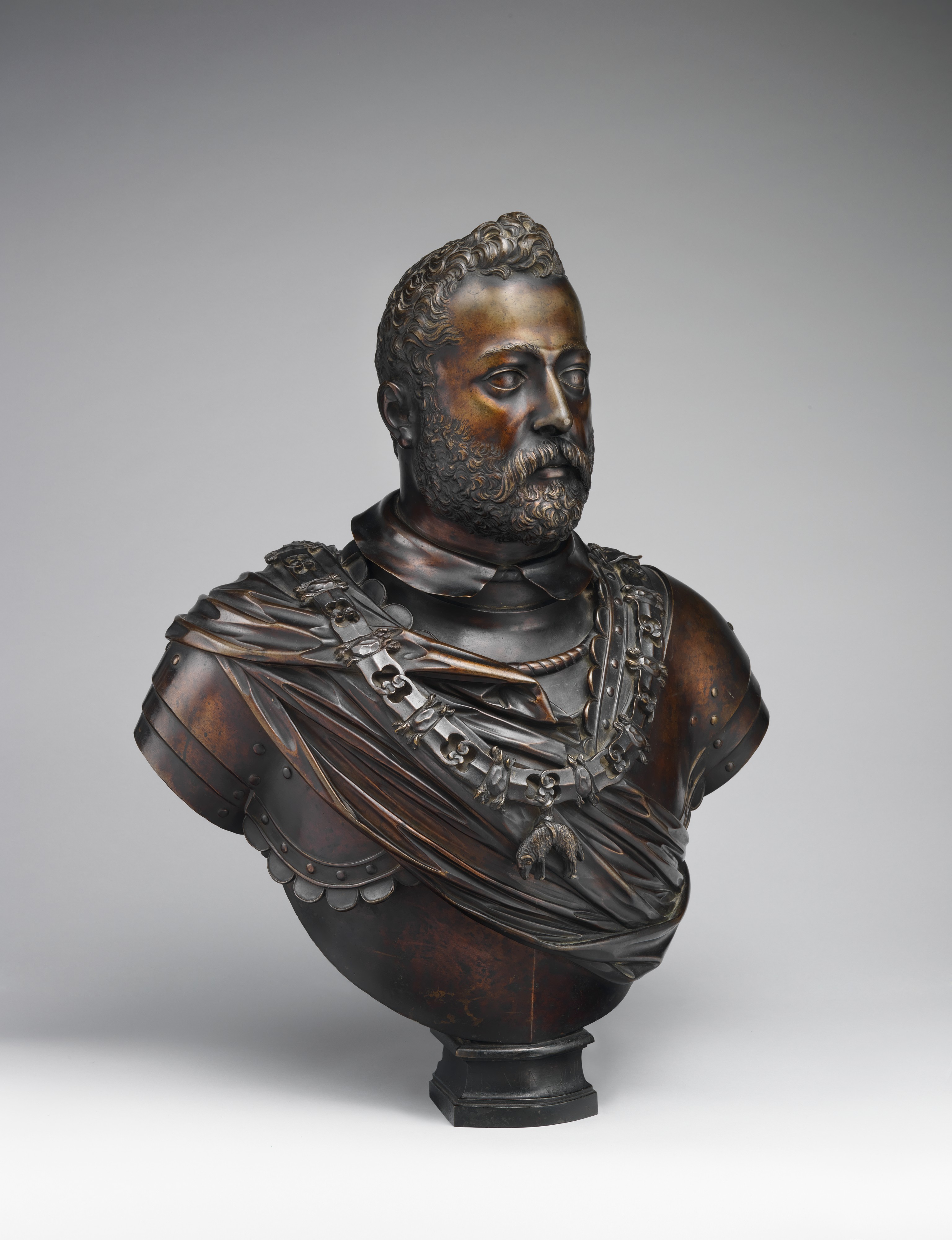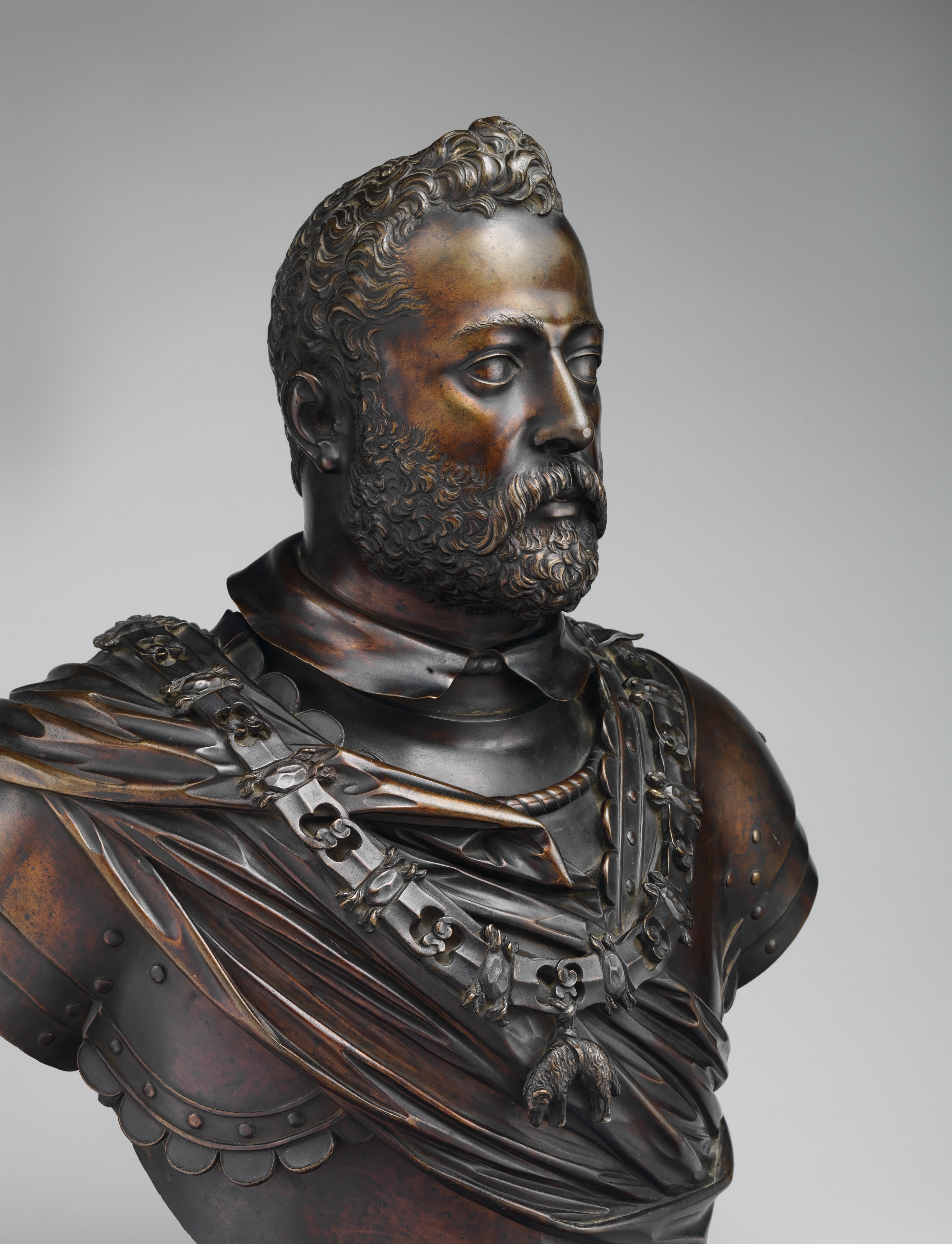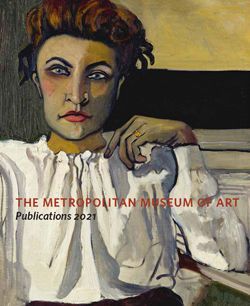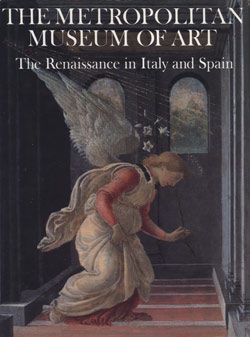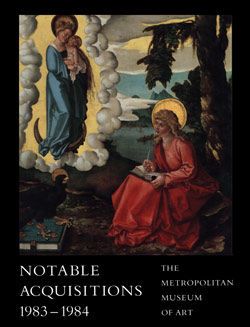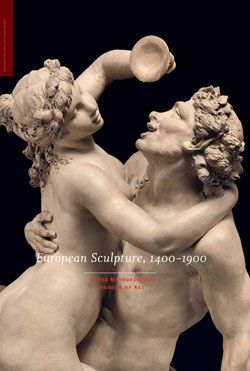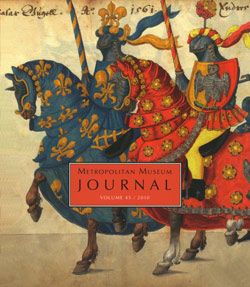Francesco I de' Medici, grand duke of Tuscany
After a model by Giambologna Netherlandish
Probably cast by Pietro Tacca Italian
The grand duke, head turned slightly to his left, wears a sixteenth-century breastplate of the so-called German or Maximilian armor. A folded sash stretches diagonally across his chest, and the badge of the Order of the Golden Fleece, which he received in 1585, hangs from an elaborate chain around his neck. The bronze retains what has been described by Richard Stone as a “magnificent organic patina of a striking color like that of a very old burgundy wine.”[1] The great portraitist of the Medici family at the time was Giambologna, and this bust perfectly aligns with his models and the late bronze production of his workshop.
Commissioned by Francesco I’s daughter, Marie de Médicis, queen of France, the bust arrived in Paris together with a magnificent bronze equestrian statue of Henri IV, begun by Giambologna and finished after his death by his pupil and artistic heir Pietro Tacca.[2] According to Filippo Baldinucci, the queen expressed her pleasure with both in correspondence dated October 10, 1614: “Sir Pietro Tacca. In response to your letter given to me on your behalf by Antonio Guidi, engineer of my cousin the Grand Duke of Tuscany [Cosimo II], I would like to let you know how happy my lord the King, my son [Louis XIII], and I were for the bronze statue you sent us, which is truly worthy of what it represents. Sir Guidi also gave me the bronze bust you sent me, and he will tell you how much it pleased me and the sum of money that I have ordered for you . . . as a sign of satisfaction.”[3] (Antonio Guidi was Tacca’s brother-in-law.) A few days prior, Matteo Bartolini, grand-ducal emissary in Paris, had notified Florence that Tacca would receive 300 scudi “as a gift of her Majesty for the bust in bronze of her father.”[4] It has not yet been possible to trace the work’s subsequent history in the French royal collection, and it was considered lost until its reappearance on the art market in 1983, when it was recognized as the bust sent to Marie de Médicis in 1611.[5]
Sorting out the contributions of Giambologna and Tacca has proved rather more complex. The modeling has been dated between 1585, when Francesco I received the Order of the Golden Fleece, and 1587, when he died. Although 1585 is certainly the terminus post quem, the portrait may well have been modeled after the grand duke’s death. The prototype for our bust clearly owes more to Giambologna than to Tacca, evident in a comparison with a marble portrait of Francesco I once installed above a portal in the former Teatro Mediceo (fig. 117a). Carved before the grand duke received the Golden Fleece, the marble is now correctly assigned to the master rather than his workshop.[6] It is also useful to compare The Met bust to that of Ferdinando I in the Bargello. The latter is an autonomous work by Tacca, probably cast around 1609, in which the modeling and treatment of the surface are not as soft as in our bust.[7] Since it is likely that Giambologna received the equestrian and bust commissions at the same time, it is reasonable to assume that he worked at both until his death in 1608. When the bust was cast is an open question. If Tacca did so after Giambologna’s death, as the written documentation seems to bear out, he loyally respected the model of his master.
Richard Stone’s technical analysis complicates and enriches our understanding of the bust. The casting seems to have been convoluted and difficult. X-radiography shows a defective cast with extensive porosity and repairs, and a head filled with different materials such as brick, none of which mars the surface of the astonishingly sleek final product, with its crisp chasing, sharply rendered drapery folds, and translucent reddish lacquer patina.8 The enormous effort expended to repair the cast rather than simply cast a new one suggests that the bust was cast directly. These peculiar material conditions reveal the unparalleled capabilities of Giambologna’s workshop and tell the story of a sculpture that is indeed unique, reinforcing its identification with the bust once in the French royal collection.
-FL
Footnotes
(For key to shortened references see bibliography in Allen, Italian Renaissance and Baroque Bronzes in The Metropolitan Museum of Art. NY: The Metropolitan Museum of Art, 2022.)
1. Stone 2010, p. 109.
2. Raggio in MMA 1984, pp. 29–30. For a recent account of the commissions, see Dimitrios Zikos in Falletti 2007, pp. 62–63, 150–63, cats. 13–17. See also Bresc-Bautier et al. 2008, pp. 164 – 69, cats. 40, 41.
3. Baldinucci 1681–1728, vol. 5, p. 357: “Sig. Pietro Tacca. In risposta di vostra lettera resami da parte vostra da Antonio Guidi, ingegnere di mio cugino il Gran Duca di Toscana [Cosimo II], vi fo noto il contento che il re mio sig., mio figliuolo [Louis XIII] ed io abbiamo ricevuto della statua di bronzo inviataci, degna veramente di quello che rappresenta. Il sig. Guidi m’ha ancora reso il busto di bronzo che m’avete inviato, e ve ne dirà mio gradimento, e la somma di danaro che ho ordinata qua per voi a quest’effetto in segno di gradimento; e prego il Signore che vi conservi.”
4. Gaye 1840, p. 539, no. CCCCXXXV nota, document dated October 7, 1614: “Il cavaliere Pesciolini . . . si mette in ordine per partirsi fra 8 o 10 giorni, et porta un bel regalo di 2000 scudi contanti, fattili dare dalla Maestà della Regina, et il Guidi un altro di quattrocento scudi, che ne porterà anche un altro per Pietro Tacca di 300 [scudi], ché la Maestà sua li dona per la testa di bronzo ch’egli ha mandato del Granduca Francesco suo padre.”
5. See Langedijk 1981–87, vol. 3, no. 42,83; C. Avery 1987, no. 36; Wardropper in Acidini Luchat 2002, cat. 77; and Wardropper 2011, no. 30.
6. See Tommaso Mozzati in Paolozzi Strozzi and Zikos 2006, p. 220, cat. 29.
7. See Vanessa Montigiani in ibid., p. 271, cat. 58.
8. R. Stone/TR, 2011.
This image cannot be enlarged, viewed at full screen, or downloaded.
This artwork is meant to be viewed from right to left. Scroll left to view more.


